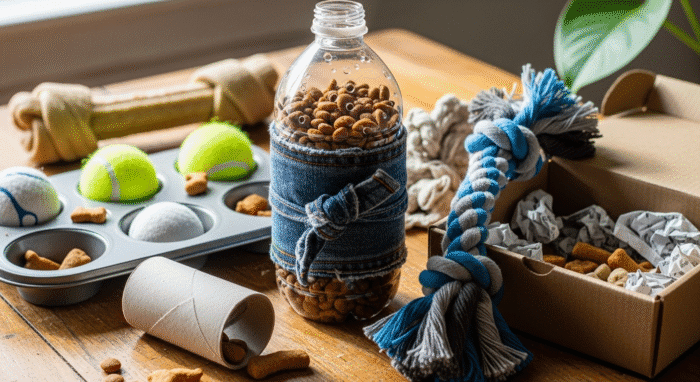Okay, let’s be honest. We all love our dogs. They’re furry, goofy, and always happy to see us – even when we’ve just stepped out to grab the mail. But sometimes… sometimes they can be a little… much. Especially when boredom strikes. Ever come home to a chewed-up shoe or a living room that looks like a fluffy tornado hit it? Yeah, me too. That’s when I started diving deep into the world of dog enrichment. And believe me, it’s a game-changer.
You might be wondering, what exactly is dog enrichment? Simply put, it’s about providing your dog with mental and physical stimulation to keep them happy, healthy, and out of trouble. Think of it as giving their brains a workout, just like you’d hit the gym (or, you know, plan to hit the gym… eventually). But here’s the thing: you don’t need to spend a fortune on fancy store-bought toys. In fact, some of the best enrichment activities are things you can easily DIY with stuff you probably already have lying around.
Table of Contents
Why Bother with DIY Dog Enrichment?

Besides saving your sanity (and your furniture), there are some serious benefits to keeping your dog mentally engaged. For starters, it helps reduce anxiety and stress. A bored dog is often an anxious dog, and that anxiety can manifest in all sorts of undesirable behaviors – excessive barking, destructive chewing, you name it. Enrichment gives them an outlet for their energy and helps them feel more secure. Plus, it strengthens the bond between you and your furry friend. Who doesn’t want more cuddle time?
And it’s not just about preventing bad behavior. Enrichment can actually improve your dog’s cognitive abilities. Think of it as giving their brain a little boost. The more they use their problem-solving skills, the sharper they’ll stay. I’ve got to admit, this part fascinates me. Seeing my own pup figure out a puzzle toy, those gears turning… it’s incredibly rewarding. Now, where to begin? Well, let’s get started.
Easy DIY Enrichment Toys for Every Dog
Here’s the thing: you don’t need to be a crafting genius to create awesome enrichment toys for your dog. Some of the simplest ideas are often the most effective. Let’s start with the classics.
- The Snuffle Mat: This is basically a fabric mat with lots of strips of fleece or felt tied to it. You hide treats in the strips, and your dog has to sniff them out. It’s like a treasure hunt for their nose! You can find tutorials all over the internet, or you can even buy one if you’re not feeling crafty. But trust me, it’s easier than it looks.
- The Puzzle Feeder: This could be as simple as hiding your dog’s food in a muffin tin and covering each cup with a tennis ball. Or you could use a cardboard box with holes cut in it and fill it with crumpled paper and treats. The idea is to make them work for their food, which slows down their eating and keeps them entertained.
- The Frozen Treat: Perfect for those hot summer days! Simply freeze some broth, peanut butter (make sure it’s xylitol-free!), or even plain yogurt in an ice cube tray or a Kong toy. It’s a tasty and refreshing way to keep your dog occupied. You can even toss in some chopped fruits or veggies for an extra boost of nutrients.
Those are the basics, but really, the possibilities are endless. I initially thought these toys wouldn’t do much, but after looking deeper, I saw my pup fully enaged for several minutes!
But wait, there’s something even more interesting here… Don’t just think about food-based enrichment. Think about sensory enrichment too. Things like playing different types of music, providing a variety of textures for them to explore (think soft blankets, crunchy leaves, smooth stones), or even just taking them for a walk in a new environment. It’s all about stimulating their senses and giving them new experiences. And remember, safety first! Always supervise your dog when they’re playing with DIY toys, and make sure to choose materials that are safe and non-toxic. Now, let’s talk about adapting your toys for different breeds and energy levels.
Tailoring Enrichment to Your Dog’s Needs
Not all dogs are created equal. A high-energy Border Collie is going to need a different kind of enrichment than a laid-back Bulldog. And a senior dog with arthritis might not be able to handle the same activities as a young, spry puppy. The key is to tailor your enrichment activities to your dog’s individual needs and abilities.
For high-energy dogs, think about activities that involve a lot of movement. Fetch, agility training, or even just a long walk in the park can do wonders. You can also try puzzle toys that require a lot of problem-solving, like the aforementioned snuffle mat. The goal is to tire them out both physically and mentally. On the other hand, for senior dogs or dogs with mobility issues, focus on activities that are gentle and low-impact. Sniffing games, gentle massage, or even just spending quality time cuddling on the couch can be incredibly enriching. You might also consider raising their food and water bowls to make it easier for them to eat and drink.
And for dogs with anxiety or separation anxiety, enrichment can be a lifesaver. Try leaving them with a puzzle toy or a frozen treat when you leave the house. The goal is to associate your departure with something positive. You might also consider creating a safe space for them, like a crate or a bed, where they can retreat when they’re feeling overwhelmed. But remember, if your dog has severe anxiety, it’s always best to consult with a veterinarian or a certified dog trainer. Here’s another article you might enjoy: DIY dog enrichment fun!. Okay, let’s see…what other aspects should we consider?
The Importance of Rotation and Variety
One of the biggest mistakes people make with dog enrichment is sticking to the same old toys and activities. Just like humans, dogs get bored easily. So, it’s important to rotate your toys and activities regularly to keep things fresh and exciting. Think about it this way: if you ate the same meal every day, you’d eventually get tired of it, right? The same goes for your dog. I keep coming back to this point because it’s crucial for maintaining your dog’s interest.
Try introducing new toys and activities every week or two. You can also try combining different types of enrichment to create a more stimulating experience. For example, you could hide treats in a snuffle mat and then let your dog search for it in a designated area. Or you could play a game of fetch with a puzzle toy. The possibilities are endless!
And don’t forget about environmental enrichment! This involves making changes to your dog’s environment to make it more stimulating and interesting. For example, you could move their bed to a different location, add a new scratching post, or even just rearrange the furniture. Small changes can make a big difference in your dog’s overall well-being. This reminds me of the importance of regular vet checkups, particularly if you own a Yorkshire Terrier: here’s a guide on protecting your pup!
FAQ: Unleashing the Answers to Your Dog Enrichment Questions
Alright, so you’re probably brimming with questions right now. And that’s great! Let’s tackle some of the most common ones I hear about DIY dog enrichment toys and activities.
How do I know if my dog is actually enjoying the enrichment activities, or if they’re just tolerating them?
That’s a fantastic question, and it’s all about paying attention to your dog’s body language. A happy and engaged dog will typically have a relaxed body posture, a wagging tail, and bright, alert eyes. They might also whine or bark excitedly when they see the enrichment toy. On the other hand, a dog who’s not enjoying the activity might show signs of stress, such as lip licking, yawning, or turning away. If you notice any of these signs, it’s best to stop the activity and try something else. It’s also important to introduce new enrichment activities gradually. Start with short sessions and gradually increase the duration as your dog gets more comfortable.
My dog destroys every toy I give them – are DIY toys a waste of time?
Not necessarily! It depends on the type of destroyer you have. If your dog is a power chewer, you’ll want to choose durable materials and avoid anything that could be easily swallowed. Think thick fabric, sturdy rope, and large, solid pieces. You can also try reinforcing your DIY toys with duct tape or other strong adhesives. For example, for frozen treats you can use specialy-made molds that help prevent your dog from tearing them apart. But here’s the thing: even the most durable toys aren’t indestructible. So, always supervise your dog when they’re playing, and remove any toy that starts to fall apart. It’s also important to consider why they are destroying things in the first place. It’s often a sign of anxiety or lack of engagement!
Are there any types of DIY enrichment toys I should avoid for safety reasons?
Absolutely! Avoid anything that could be a choking hazard, such as small pieces of plastic, buttons, or beads. Also, avoid using toxic materials, such as certain types of glue or paint. And never give your dog a toy that could splinter or break into sharp pieces. Finally, be careful when using food-based enrichment toys. Some foods are toxic to dogs, such as chocolate, grapes, and onions. And always make sure to adjust your dog’s food intake to account for the extra calories they’re getting from the treats. Also, it is generally best to avoid foods with a high amount of salt or sugar. It is also very important to avoid any toys that can be a choking hazard for your pet. If you have any doubts, consult with your vet.
How can I ensure that my DIY dog enrichment toys are actually enriching and not just a momentary distraction?
This is where understanding your dog’s natural behaviors comes in handy. Think about what they were bred to do. Terriers love to dig, so a digging box filled with sand or fabric scraps can be incredibly rewarding. Herding breeds thrive on mental challenges, so puzzle toys that require problem-solving are a great choice. The key is to tap into their instincts and provide activities that allow them to express those natural behaviors. Also, be sure to rotate the toys and activities frequently to keep things fresh and engaging. Variety is the spice of life, even for dogs!
Hopefully, this FAQ section has helped clear up some of the questions that you had. With DIY dog enrichment toys, you can keep your canine companion engaged and happy.

